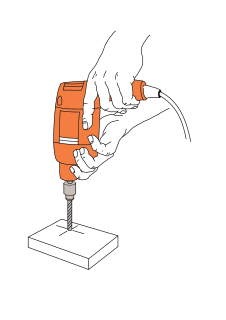 W
WArchimedes' screw, also known as the water screw, screw pump or Egyptian screw, is a machine used for transferring water from a low-lying body of water into irrigation ditches. Water is pumped by turning a screw-shaped surface inside a pipe. Archimedes screws are also used for materials such as powders and grains. Moreover, Archimedes screws could produce power if they are driven by flowing fluid instead of lifting fluid. Although commonly attributed to Archimedes, there is some evidence that the device had been used in Ancient Egypt long before his time.
 W
WThe bookwheel is a type of rotating bookcase that allows one person to read multiple books in one location with ease. The books are rotated vertically similar to the motion of a water wheel, as opposed to rotating on a flat table surface. The design for the bookwheel originally appeared in a 16th-century illustration by Agostino Ramelli at a time when large books posed practical problems for readers. Ramelli's design influenced other engineers and, though now obsolete, inspires modern artists and historians.
 W
WA centrifugal governor is a specific type of governor with a feedback system that controls the speed of an engine by regulating the flow of fuel or working fluid, so as to maintain a near-constant speed. It uses the principle of proportional control.
 W
WA drill or drilling machine is a tool primarily used for making round holes or driving fasteners. It is fitted with a bit, either a drill or driver, depending on application, secured by a chuck. Some powered drills also include a hammer function.
 W
WAn electric drill is a drill which is driven by an electric motor. The invention of the electric drill is credited to Arthur James Arnot and William Blanch Brain of Melbourne, Australia who patented the electric drill in 1889. In 1895, the first portable handheld drill was created by brothers Wilhelm & Carl Fein of Stuttgart, Germany. In 1917 the first trigger-switch, pistol-grip portable drill was patented by Black & Decker.
 W
WThe Geneva drive or Maltese cross is a gear mechanism that translates a continuous rotation movement into intermittent rotary motion.
 W
WThe Goldschmidt alternator or reflector alternator, invented in 1908 by German engineer Rudolph Goldschmidt, was a rotating machine which generated radio frequency alternating current and was used as a radio transmitter. Radio alternators like the Goldschmidt were some of the first continuous wave radio transmitters. Like the similar Alexanderson alternator, it was used briefly around World War I in a few high power longwave radio stations to transmit transoceanic radiotelegraphy traffic, until the 1920s when it was made obsolete by vacuum tube transmitters.
 W
WIn industrial process engineering, mixing is a unit operation that involves manipulation of a heterogeneous physical system with the intent to make it more homogeneous. Familiar examples include pumping of the water in a swimming pool to homogenize the water temperature, and the stirring of pancake batter to eliminate lumps (deagglomeration).
 W
WA rotary union is a union that allows for rotation of the united parts. It is thus a device that provides a seal between a stationary supply passage and a rotating part to permit the flow of a fluid into and/or out of the rotating part. Fluids typically used with rotary joints and rotating unions include various heat transfer media and fluid power media such as steam, water, thermal oil, hydraulic fluid, and coolants. A rotary union is sometimes referred to as a rotating union, rotary valve, swivel union, rotorseal,rotary couplings, rotary joint, rotating joints, hydraulic coupling, pneumatic rotary union, through bore rotary union, air rotary union, electrical rotary union, or vacuum rotary union